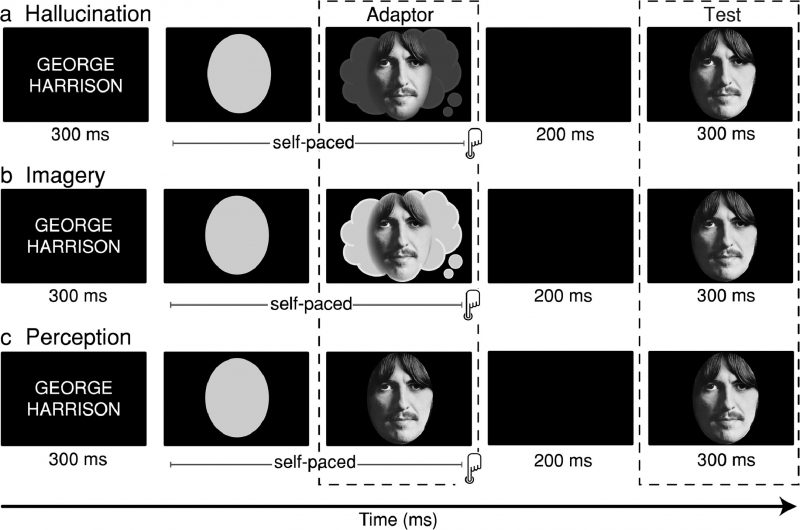22 de mayo 2021
Resume:
Hypnotic suggestions can produce a broad range of perceptual experiences, including hallucinations. Visual hypnotic hallucinations differ in many ways from regular mental images. For example, they are usually experienced as automatic, vivid, and real images, typically compromising the sense of reality. While both hypnotic hallucination and mental imagery are believed to mainly rely on the activation of the visual cortex via top-down mechanisms, it is unknown how they differ in the neural processes they engage. Here we used an adaptation paradigm to test and compare top-down processing between hypnotic hallucination, mental imagery, and visual perception in very highly hypnotisable individuals whose ability to hallucinate was assessed. By measuring the N170/VPP event-related complex and using multivariate decoding analysis, we found that hypnotic hallucination of faces involves greater top-down activation of sensory processing through lateralised neural mechanisms in the right hemisphere compared to mental imagery. Our findings suggest that the neural signatures that distinguish hypnotically hallucinated faces from imagined faces lie in the right brain hemisphere.


